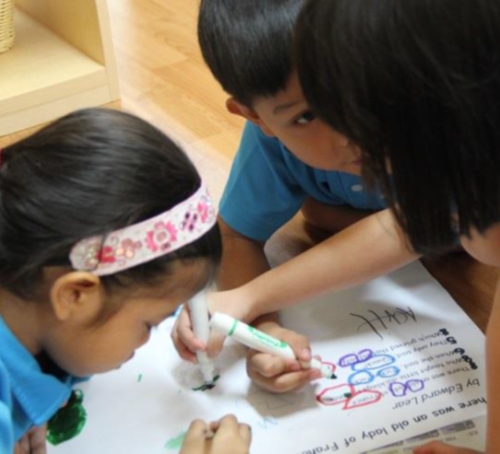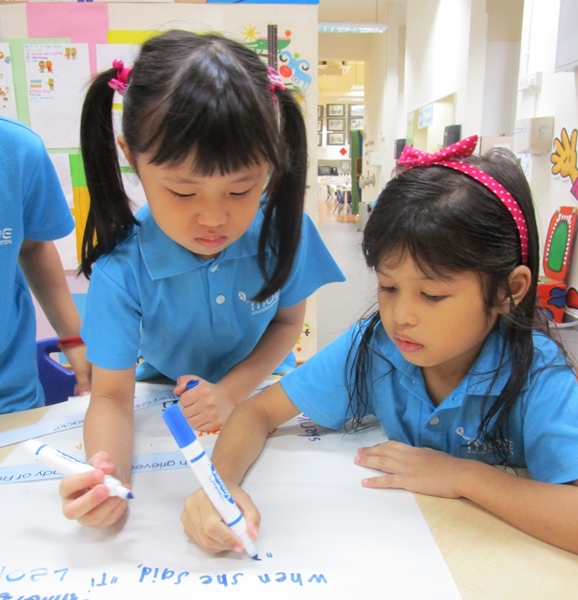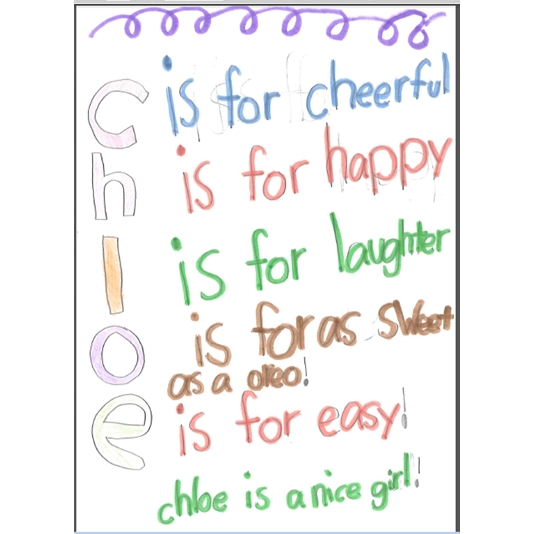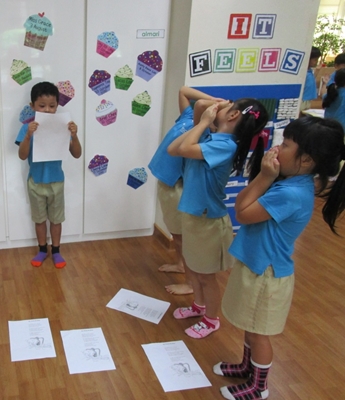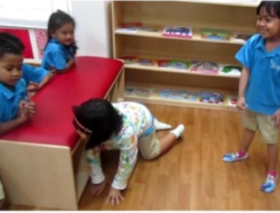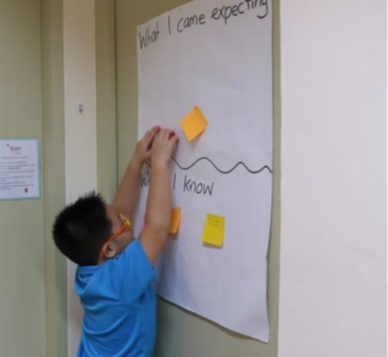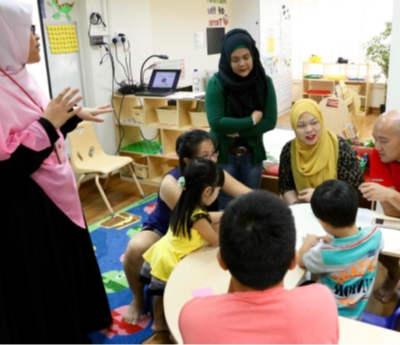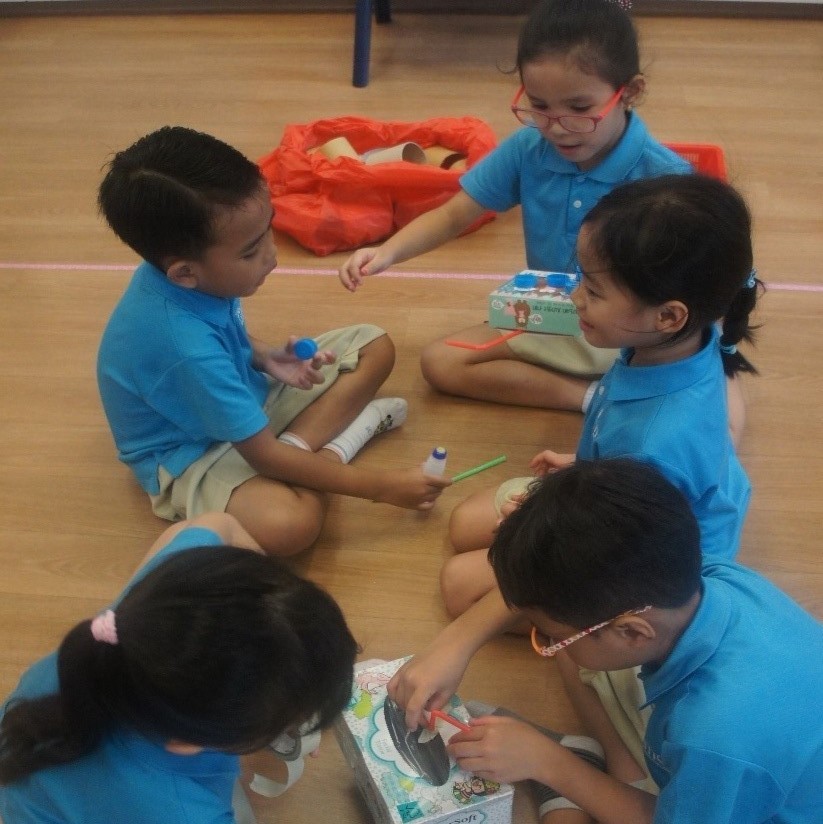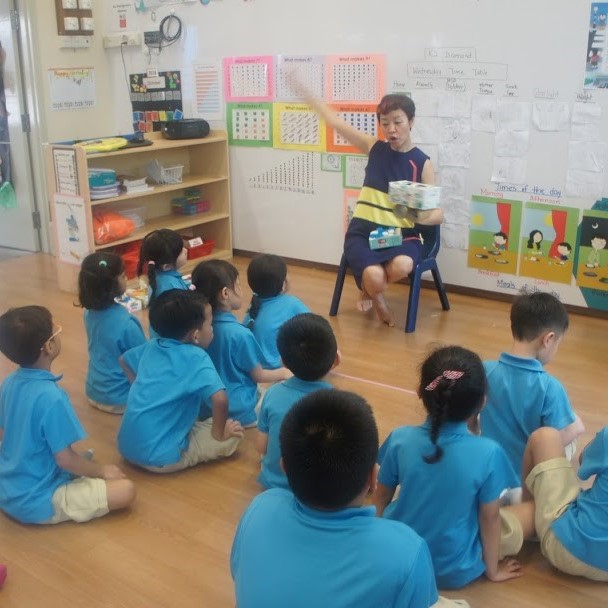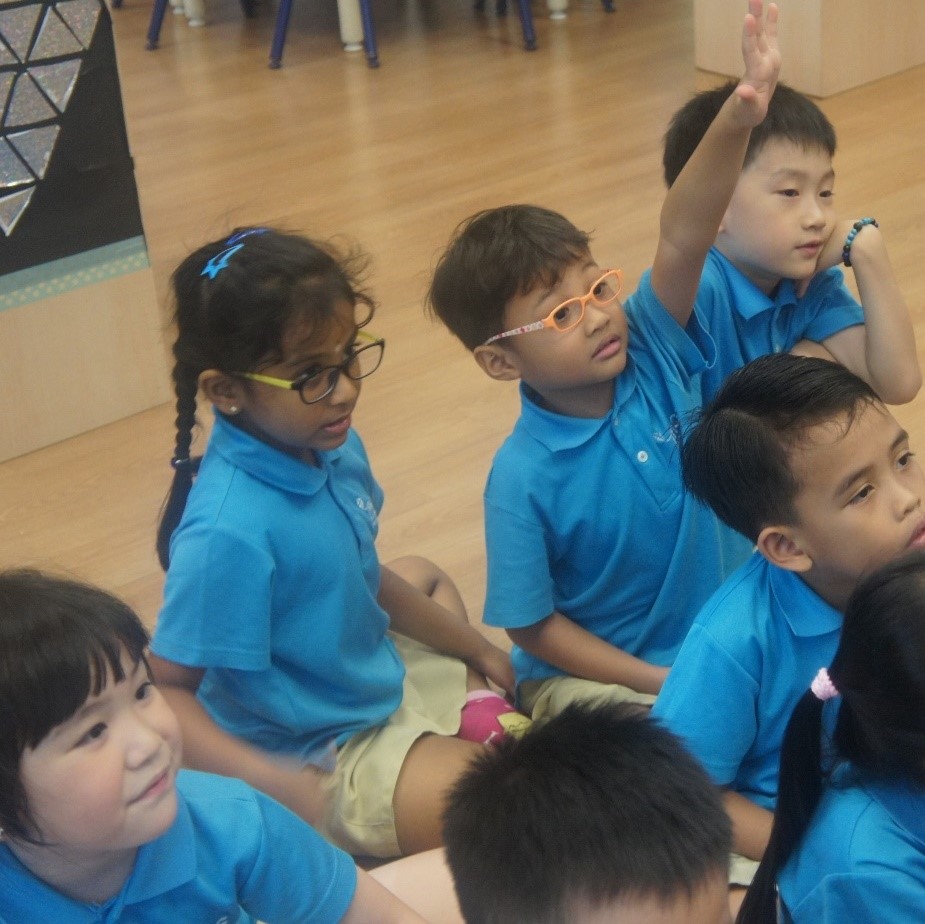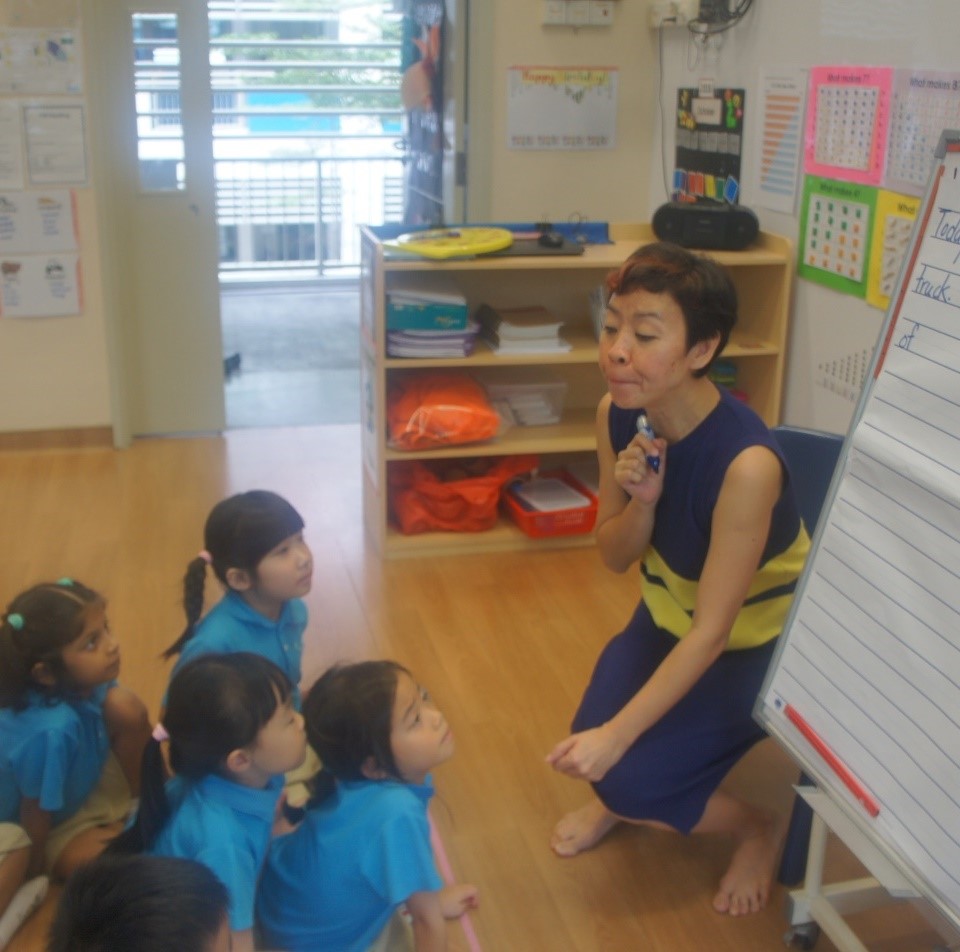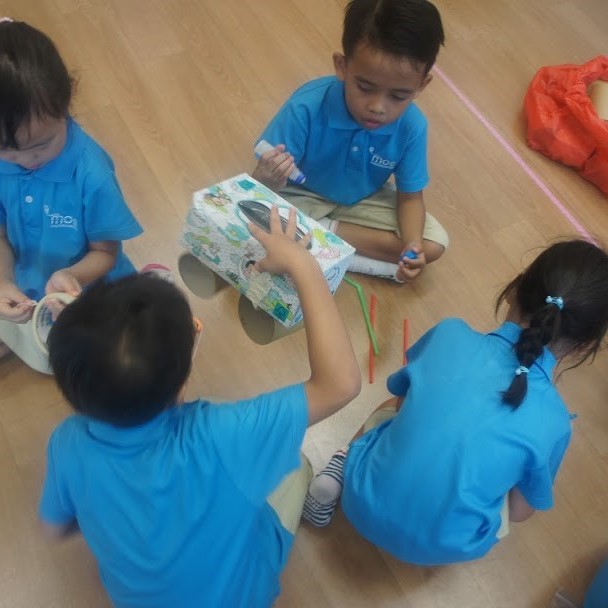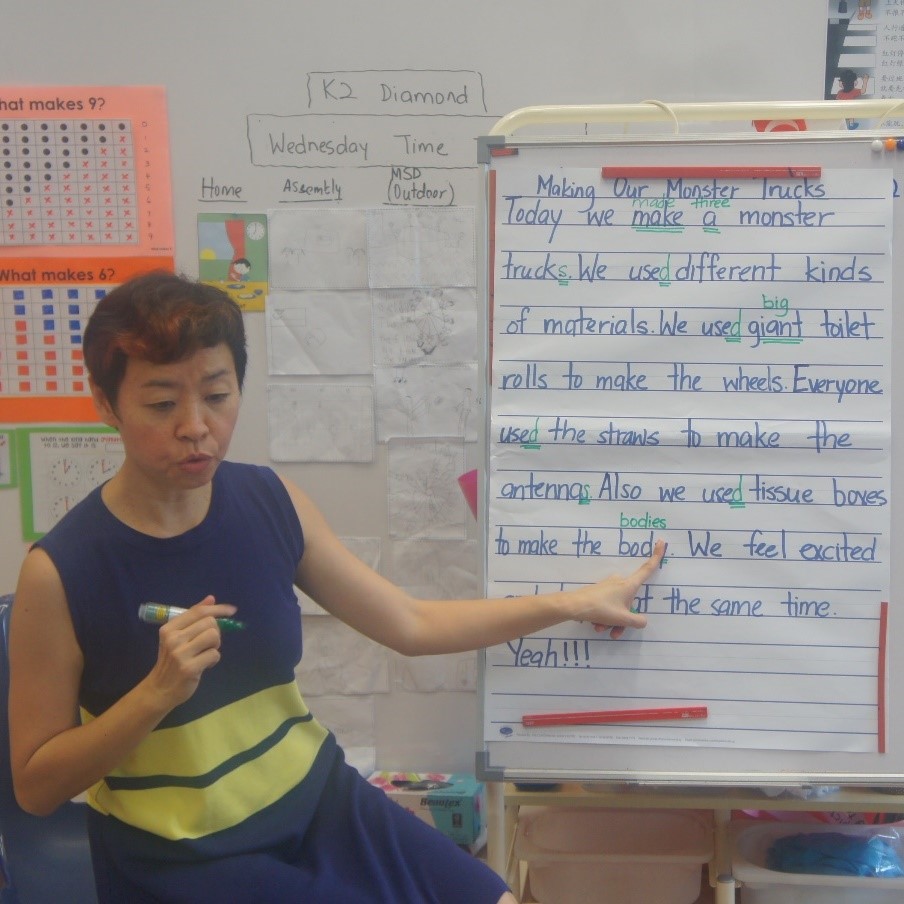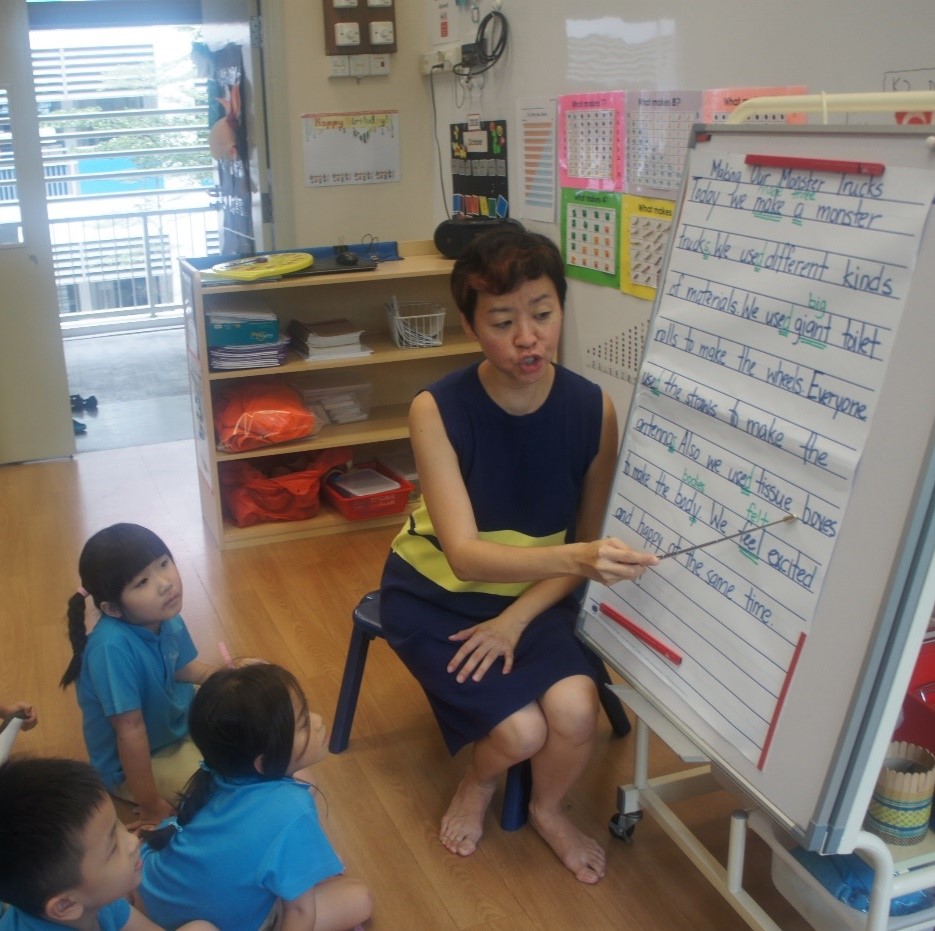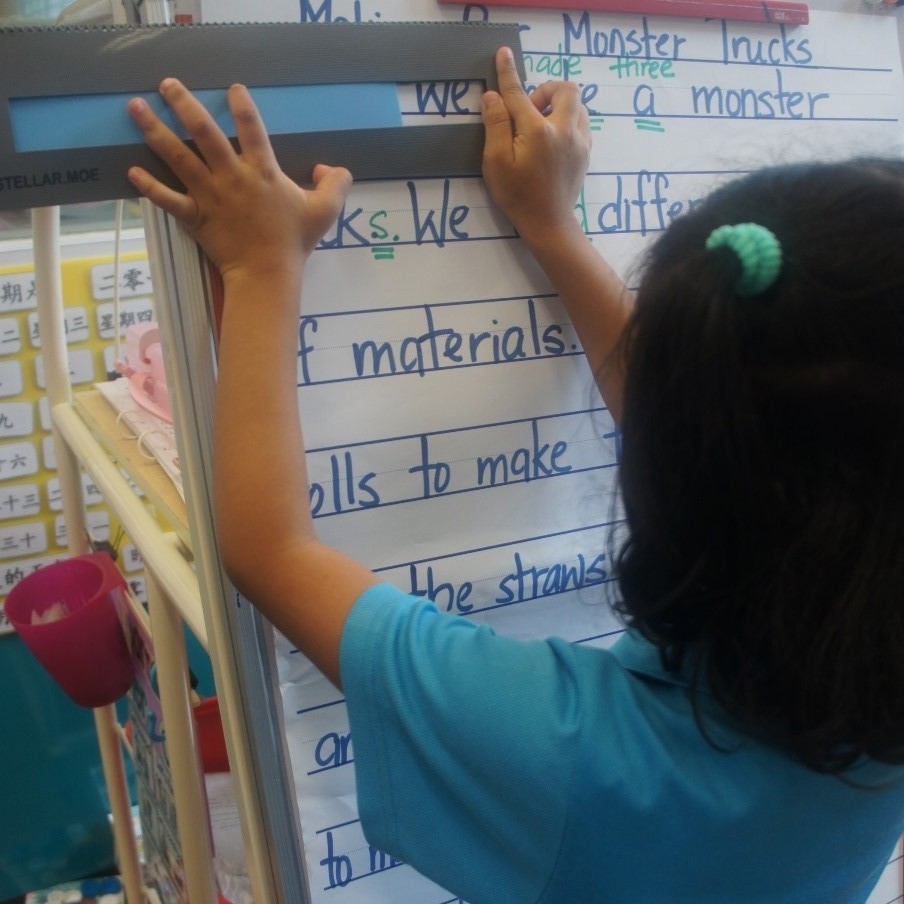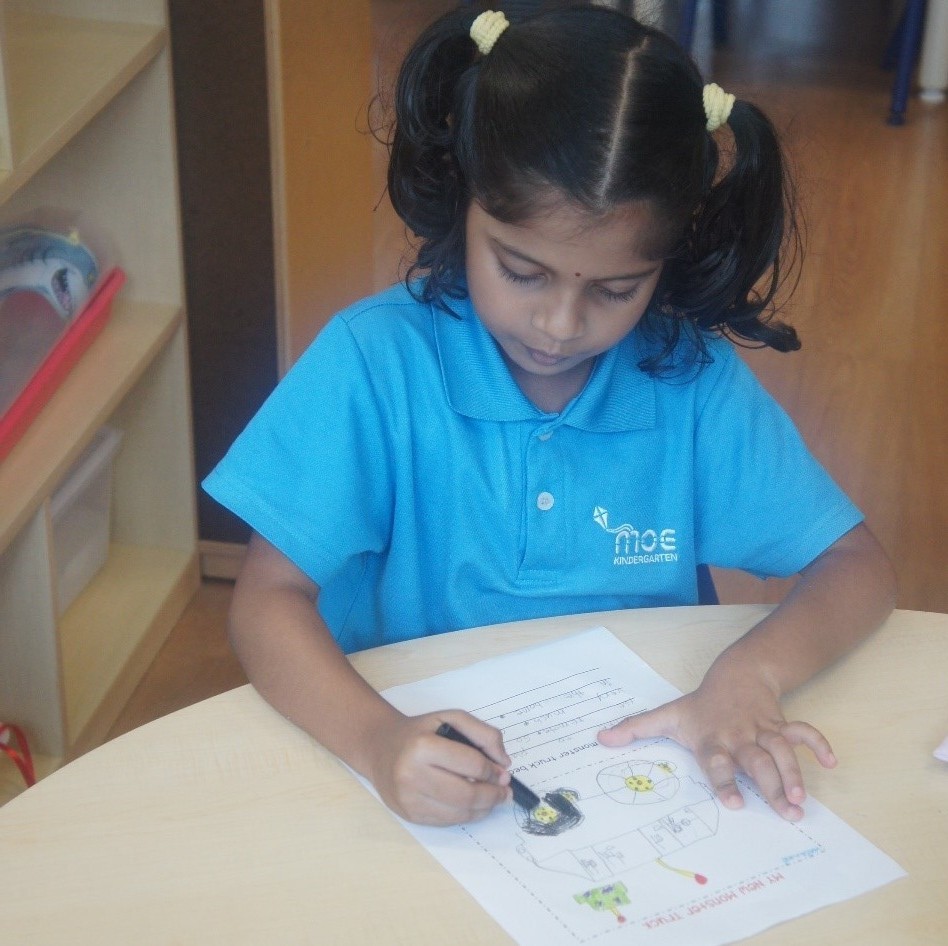Home >
Teaching and Learning >
Learning Areas >
Language and Literacy
Language and Literacy
What is it?

|
English Language
Mother Tongue Language
|
| Find out more | |||
|---|---|---|---|
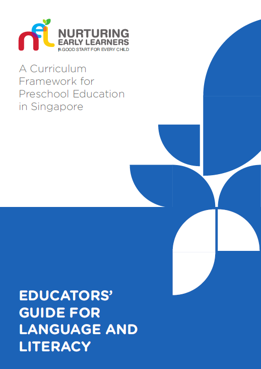 |
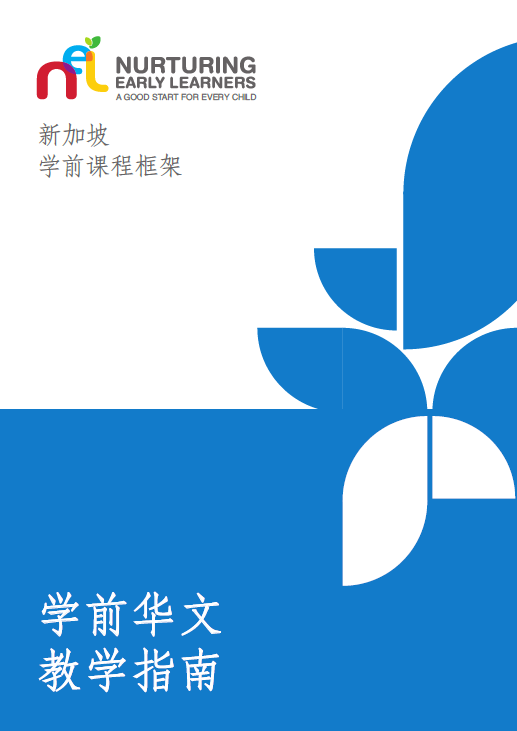 |
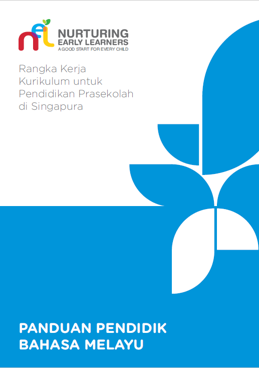 |
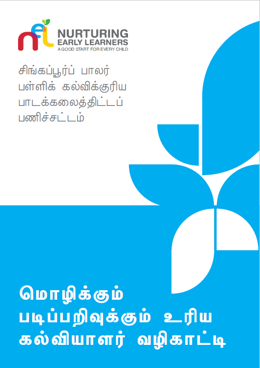 |
Why is it important?

|
Early bilingualism where children learn both the English Language and Mother Tongue Language:
|
| Find out more | |||
|---|---|---|---|
 |
 |
 |
 |
Photo Story 1
Poetry for Young Children
Poetry is a fun and engaging way to develop children’s phonological awareness. Phonological awareness is about understanding the sound structure of oral language at the word, syllable, rhyme and phoneme levels.
Learn how you can use poetry to help develop phonological awareness in your children!
Photo Story 2
Shared Writing
In order to spell and write words, children should be able to link letters to their sounds and understand that letters are used to write the sounds they hear in words. Teachers can help them achieve this understanding by using shared writing to model the writing process. Learn more about how shared writing can be used to develop children’s early literacy skills.
